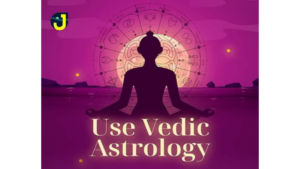In our previous article, we explored the concept of the human software mind and how our inner state influences the circumstances we encounter. Today, we delve deeper into this fascinating topic, uncovering the intricate workings of the mind and how it manifests our external reality.
Our mind operates much like a computer, with two primary components: the conscious mind and the subconscious mind. The conscious mind, accounting for only 10-12% of our mental capacity, is responsible for logical reasoning, discerning, analyzing, and thinking. It’s the part of our mind that questions, “Why is this happening to me?” during unfavorable situations.
Let’s say someone eats food and gets food poisoning. As they experience loose motions and vomiting, they endure physical pain but not mental distress because they can logically deduce that the discomfort is due to consuming the wrong food. The knowledge that the symptoms are a direct result of food poisoning brings mental peace.
In contrast, certain health conditions cause ongoing symptoms like loose motions and vomiting without a clear reason, leaving the individual in a state of confusion and mental anguish. When logical reasoning fails to explain our struggles, we often feel mental distress. This is where the subconscious mind comes into play.
The subconscious mind constitutes a remarkable 88-90% of our mental capacity and is 6,000 times more powerful than the conscious mind. It stores all our experiences from the moment of conception until the present and beyond, regardless of whether we are consciously aware of them or not. This programming influences our beliefs, emotions, and behaviors, often without our conscious awareness. It’s this powerful, hidden programming that shapes much of our reality.
Imagine putting all your conscious efforts into achieving a goal, yet finding yourself unable to succeed. This often happens because the subconscious programming isn’t aligned with your conscious intentions. For example, despite consciously striving for financial stability, if your subconscious mind harbors deep-seated beliefs about scarcity or unworthiness, these beliefs will sabotage your efforts.
The conflict between the conscious and subconscious minds can lead to significant internal stress, sometimes even resulting in neurological disorders. This underscores the importance of aligning our conscious goals with our subconscious programming.
Consider this: If someone is asked to describe their school, they can easily retrieve those memories from their subconscious mind. However, if they are asked to recall an event from when they were two days old, they likely won’t remember. Yet, that experience is still stored in their subconscious mind. This vast repository of experiences from one’s current life, as well as past lives, influences their present reality.
Understanding this connection is crucial for taking control of our lives. By becoming aware of and reprogramming our subconscious mind, we can align our inner state with our desired outcomes, fostering a more harmonious existence.
In our next discussion, we’ll explore the workings of the subconscious mind in greater detail, illustrating its impact on our lives through anecdotes and examples. We will also focus on the belief systems that shape our reality. Stay tuned as we continue this journey of self-discovery and transformation.

About Trisha Kaushik
Trisha Kaushik, a graduate from NIT Bhopal, has navigated through significant physical and emotional challenges, leading her to delve deep into the world of alternative healing. Through this journey, she uncovered the transformative power of the subconscious mind. Today, as a practitioner and founder of ‘ANAHATA – Look Deeper,’ Trisha empowers others through clinical hypnotherapy and various transformative modalities to achieve holistic well-being.
For more information, reach out to Trisha on Instagram at @anahatatherapy.trisha and visit her website below:
Source Credits: anahatatherapy.com
Also Read : Life is sometimes not a Cakewalk







